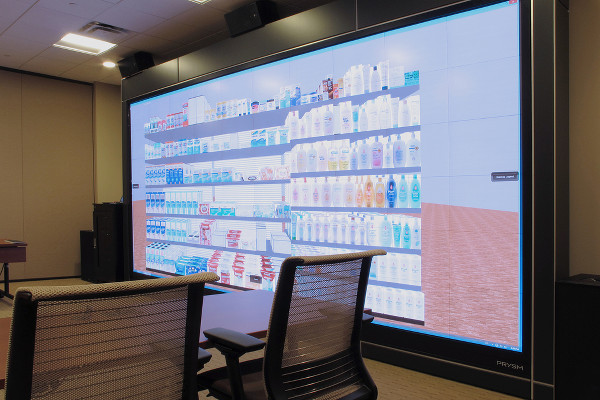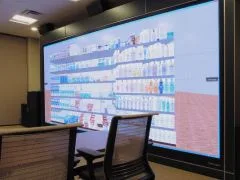Stuart Monks is from Prysm which has developed LPD laser phosphor displays. Monks came from Polycom to join the company and is looking at how collaboration occurs in an enterprise. Prysm, as we have reported before, is pivoting away from its LPD displays to other market segments based around collaboration on big displays.
The company has headquarters in San Jose, with manufacturing in Thailand and China.
Meetings are still run according to a model that is very old and out of date, said Monks. Passive traditional meetings leave participants uninvolved. Conference calls can be very dull with many participants doing other things while conference calls are going on.
Video has moved from QCIF to 720P, 1080P and even 1080P60 content, so video is more or less “good enough”. However, the problem is not now video, it is data. What people want is to be able to use their display real estate to share data. The data and access needs to be integrated into the software environment that you want to use, not in a separate application.
Prysm has a range of devices and software (from a 190″ LPD touch-enabled display) and Prysm is very keen on touch. The grammar of gestures is not yet standardised and that makes gesture unlikely as an alternative to touch at the moment. Touch at the wall, but also at personal devices, is key.
In the mid-range, Prysm has LCDs with Gorilla Glass (treated to be ‘finger-friendly’) and with zero-parallax touch. Displays can show content from many sources. In August, there will be integration of Microsoft Lync (now Skype for Business).
The key for success in this application is ease of use. The competition is not Smart or Microsoft, it’s with a white board. If a new user can’t use the display within 30 seconds, they may never use it.
The main reason for the system is collaboration at a distance, so there is a feature in the firm’s products to allow large and small walls to talk to each other. The system can take into account different users with different resolutions and aspect ratios. In August, there will be integration of Prysm’s current cloud-based recording system with Microsoft.
An unusual application is a virtual retail application with Crossmark, which allows the planning of products on retail shelves. Touching the product brings up data about sales in that shelf position.


